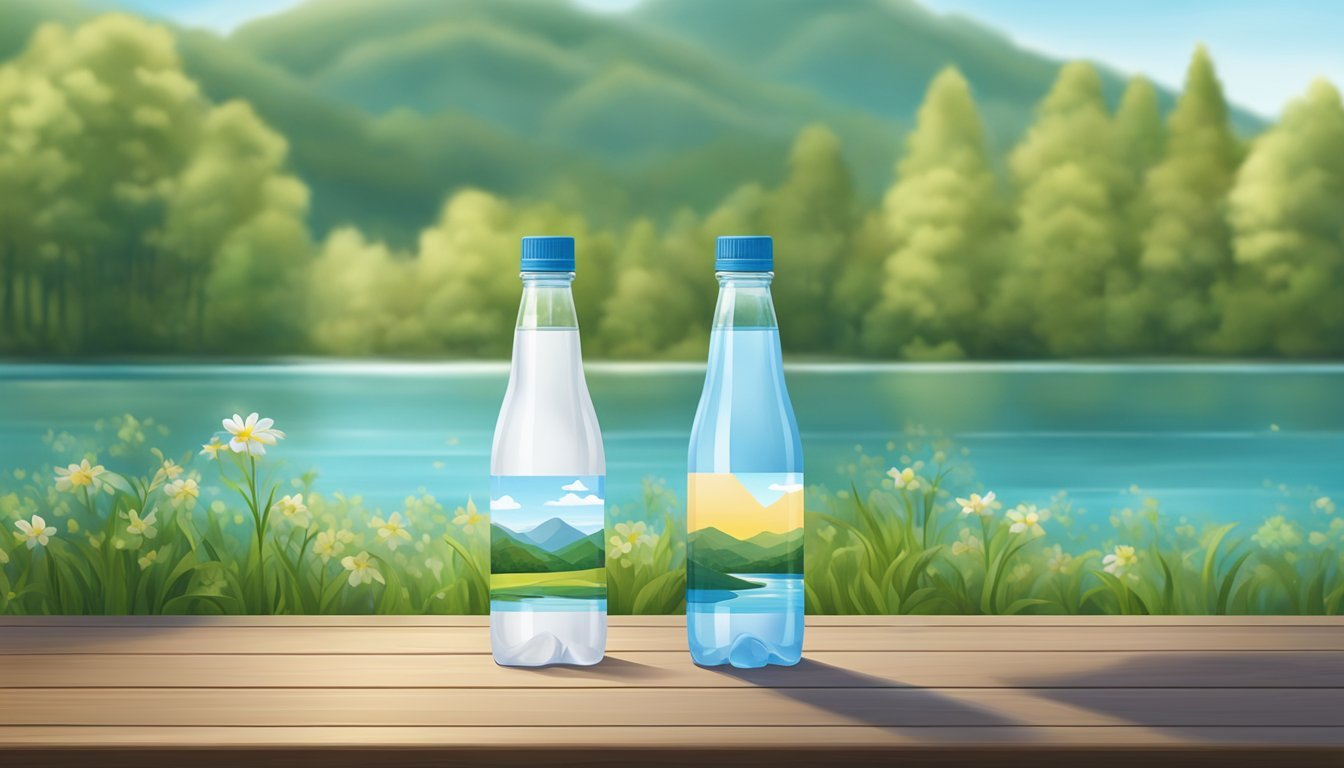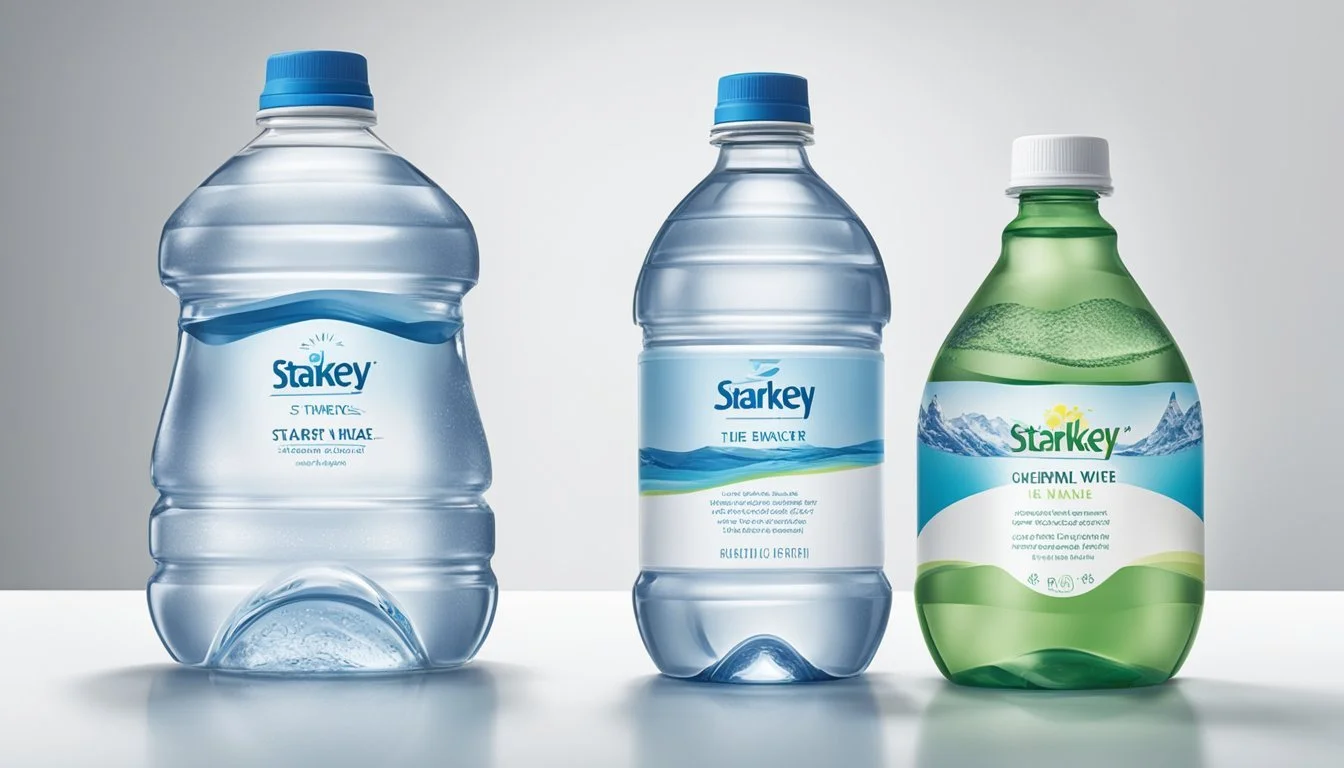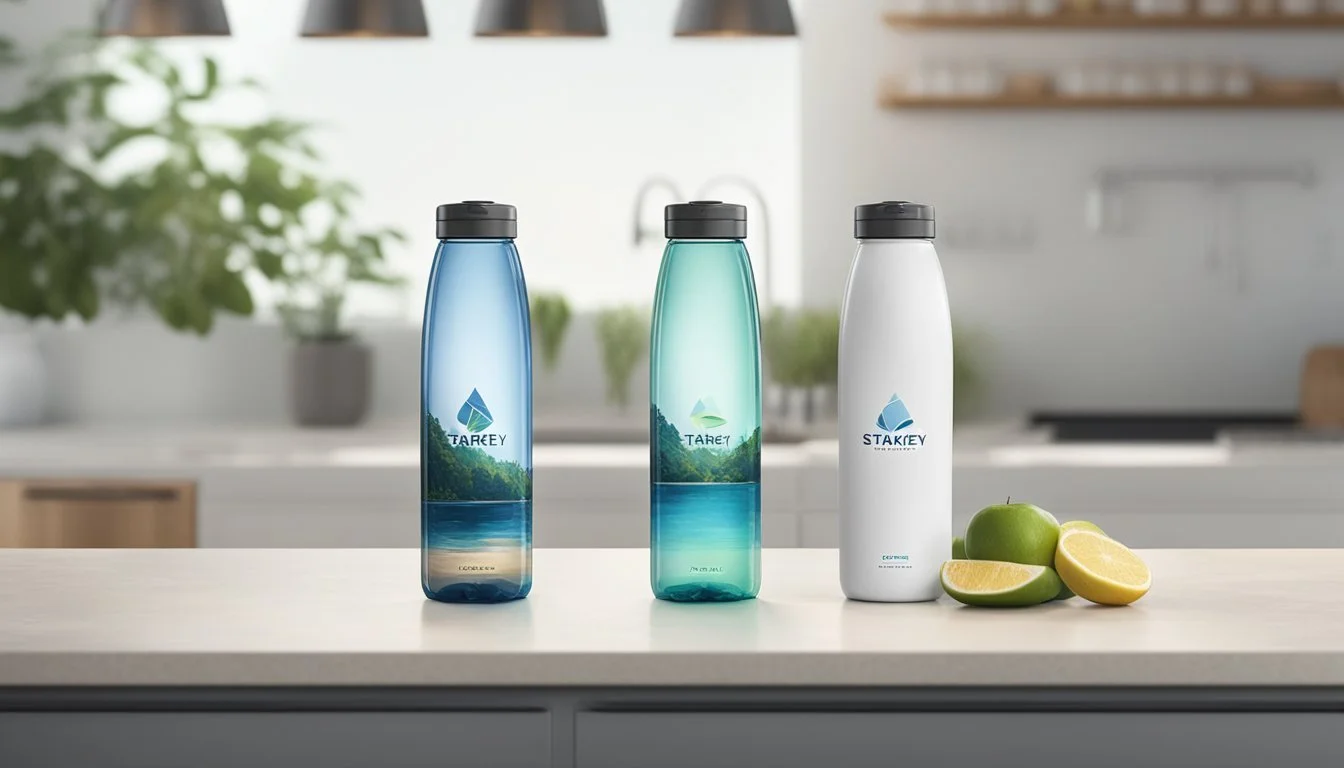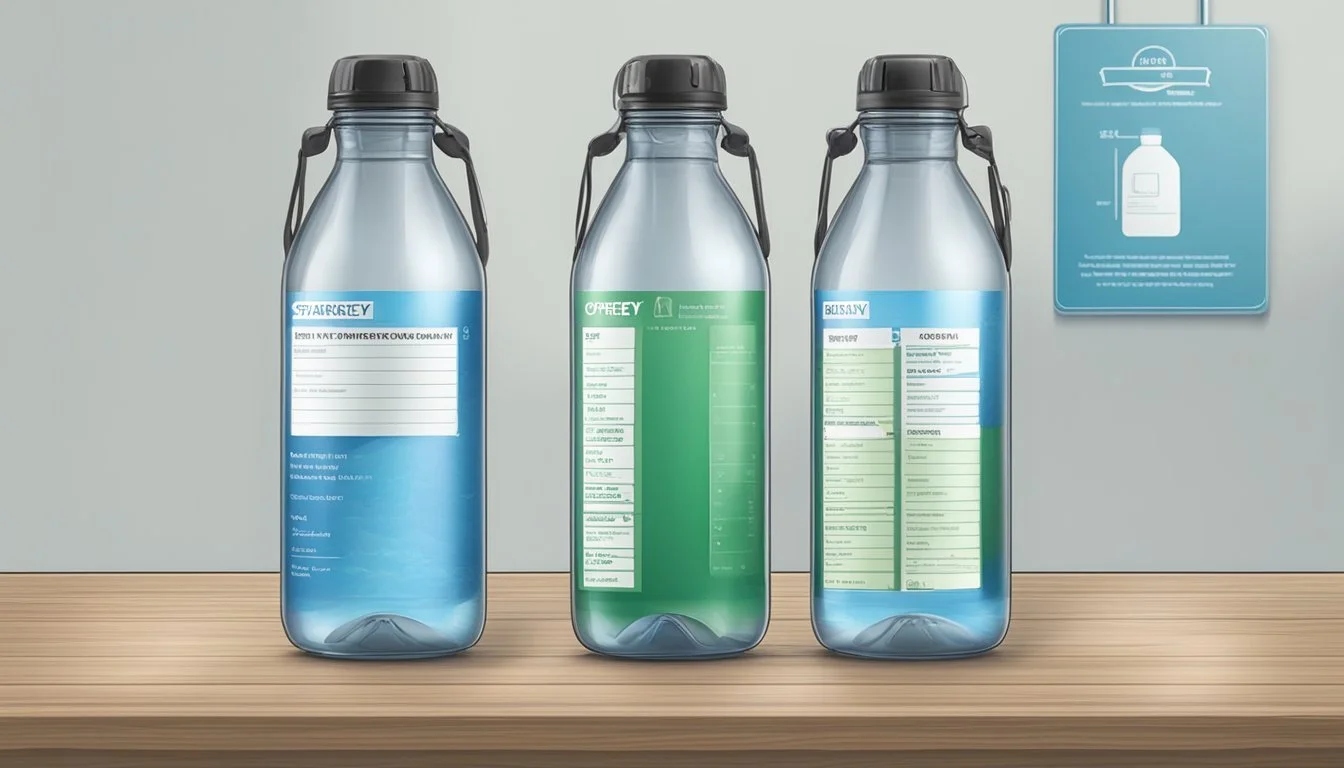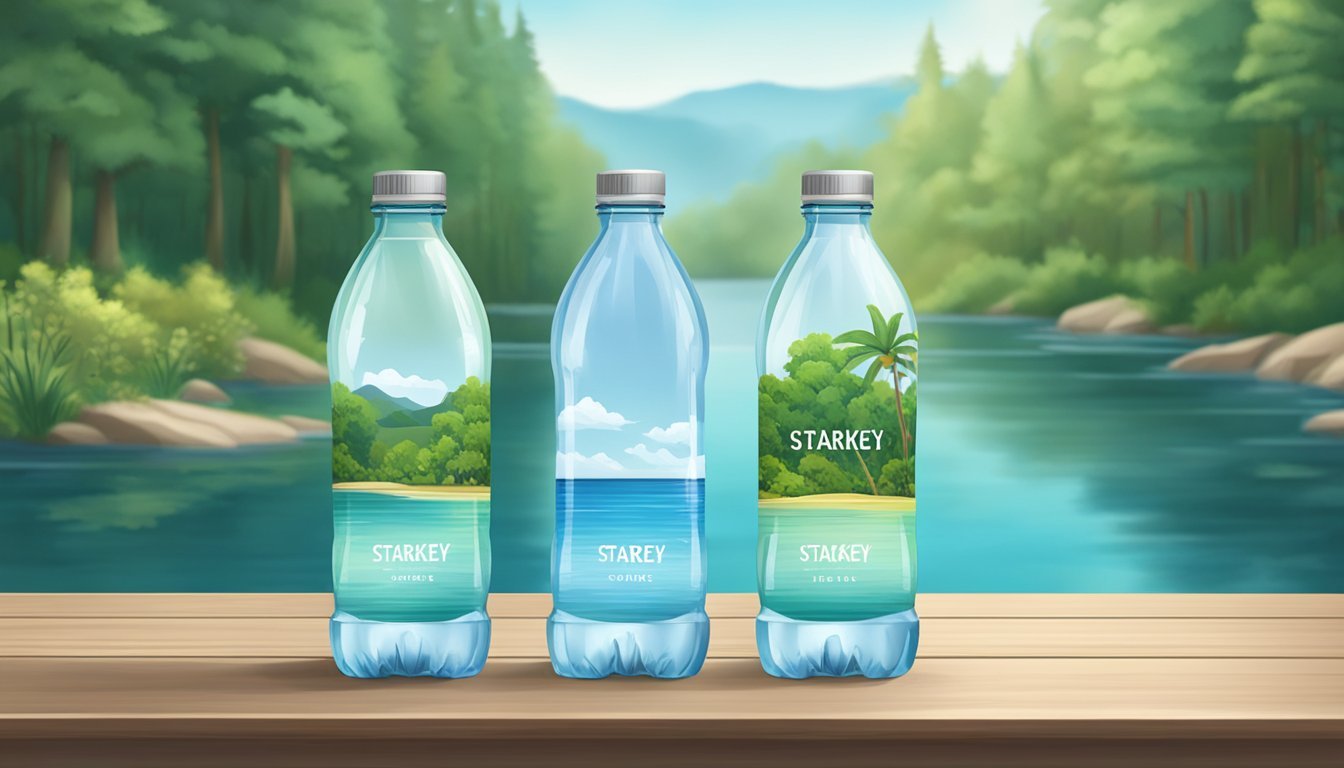Starkey vs. Open Water
A Clear Comparison of Bottled Water Quality
When choosing between bottled waters like Starkey and Open Water, discerning consumers often seek a balance of taste, quality, and source. Starkey, known for its unique savory flavor and thicker consistency, comes from a natural spring source and provides a distinct hydration experience. In contrast, Open Water offers purified water with a crisp, clean taste, aiming to match the pure standard typically associated with tap water.
For those who appreciate the nuances of natural spring water, Starkey might be the preferred choice, especially for its uncommon taste profile. However, for individuals prioritizing environmental sustainability and a more neutral flavor, Open Water stands out with its eco-friendly packaging and reliably pure composition. This battle between Starkey and Open Water highlights the evolving preferences in the bottled water market, emphasizing both quality and environmental considerations.
Choosing the right bottled water is a personal decision that depends heavily on individual taste and the values one places on sustainability and purity. Whether seeking the rich, natural taste of Starkey or the clean reliability of Open Water, both options cater to specific hydration needs and preferences in a market flooded with choices.
Origin and Source
Starkey and Open Water approach their bottled water sources in distinct ways. Starkey emphasizes its connection to nature through a geothermal spring, while Open Water focuses on environmental sustainability.
Starkey Water's Geothermal Spring
Starkey sources its water from a geothermal spring in the Idaho mountains. This spring lies deep within the Earth's crust, providing naturally filtered water that's rich in minerals. The geothermal process ensures that the water remains pure and free from surface contaminants.
The water is drawn from a deep aquifer, where it absorbs a unique mineral profile. This long journey through underground rock layers imparts a clean, crisp taste.
Starkey highlights the natural purity and balanced mineral content of its water, making it an attractive choice for those who prefer spring water with a distinctive taste.
Open Water's Environmental Approach
Open Water takes a different route by focusing on reducing environmental impact. It sources its water from municipal supplies, ensuring the quality through advanced purification techniques. This approach allows them to produce bottled water with consistent quality while minimizing the strain on natural springs.
Environmental Responsibility
Open Water is committed to sustainability, packaging its water in aluminum bottles that are infinitely recyclable. This choice significantly reduces plastic waste. Additionally, their operations aim to be carbon-neutral, further enhancing their environmental credentials.
Their approach appeals to eco-conscious consumers who want quality water without contributing to plastic pollution.
Purification and Quality
Starkey and Open Water use different methods to ensure the purity and safety of their products. By examining the purification processes they utilize, consumers can make an informed choice on which brand aligns with their health and quality preferences.
Reverse Osmosis and Filtration
Open Water emphasizes purity through modern techniques like reverse osmosis. This process involves forcing water through a semipermeable membrane to remove contaminants, including dissolved salts and impurities. The result is high-purity water with minimal mineral content.
In addition to reverse osmosis, Open Water also employs advanced filtration systems. These systems may include activated carbon filters that help remove organic compounds and chlorine, ensuring safety and improving taste. Combined, these methods create water that is not only pure but also safe for daily consumption.
Natural Purification Processes
Starkey, on the other hand, sources its water from natural springs, relying on natural purification processes. These springs are often located in protected environments where the water has naturally passed through layers of rock and soil, filtering out impurities over time.
The mineral content in Starkey water can vary based on the geological characteristics of the source. This natural mineral presence can offer additional health benefits, contributing to the unique taste of the water. By maintaining these natural properties, Starkey provides a product that appeals to consumers looking for water with a distinct profile.
Health and Hydration Benefits
Both Starkey and Open Water provide distinct advantages in health and hydration. Each brand offers unique mineral compositions and electrolyte levels, which can influence overall hydration and health benefits.
Mineral-Rich Formulations
Starkey water is known for its rich mineral content. It contains a significant amount of silica, which is believed to support bone health and improve skin elasticity. Additionally, Starkey water provides important minerals like calcium, magnesium, and potassium, which aid in various bodily functions.
Open Water focuses more on purity, with fewer minerals. It boasts a clean, refreshing taste due to its minimalistic mineral profile. This makes it an excellent choice for those who prefer a crisp, pure drinking experience without additional mineral taste.
Hydration and Electrolytes
Proper hydration hinges on effective electrolyte balance. Starkey water, with its varied mineral content, naturally includes electrolytes such as sodium and potassium. These elements are crucial for maintaining fluid balance and supporting muscle function.
Open Water, while low in minerals, provides hydration that's free from contaminants commonly found in tap water. It's an ideal option for those seeking clean hydration without added electrolytes. This makes it particularly suitable for individuals who prefer controlled intake of minerals and electrolytes based on personal dietary needs.
Taste Comparison
Starkey and Open Water present unique taste experiences driven by their distinct water sources and mineral content. Evaluating the flavor profiles and consumer preferences helps understand which brand stands out.
Flavor Profiles for Connoisseurs
Starkey water is known for its unique, mineral-rich taste. It often surprises drinkers with a thicker texture and almost savory notes, which can be a divisive factor.
Open Water, on the other hand, delivers a crisp, clean taste with a smooth finish. This flavor profile appeals to those who prefer a refreshing experience without any lingering aftertaste.
Both brands offer distinct culinary experiences that cater to different preferences, making the choice largely subjective.
Consumer Preferences and Perceptions
Many consumers appreciate Starkey for its bold and robust taste profile, especially those who seek a mineral-rich water.
Alternatively, Open Water enjoys popularity for its light, crisp, and refreshing taste, which many find more accessible for everyday hydration.
Surveys and blind taste tests indicate a preference split; Starkey intrigues with its unique characteristics, while Open Water tends to win favor for its more universally appealing flavor.
This division highlights the subjective nature of water taste, influenced by individual palate sensitivity and personal preferences.
Brand Strategies and Market Position
Both Starkey and Open Water have distinct strategies that appeal to different consumer segments in the competitive bottled water market. The following sections delve into these strategies and their effects on market position.
Marketing to the Health-Conscious Consumer
Starkey targets health-conscious consumers by emphasizing its high mineral content and natural sourcing. Owned by Whole Foods Market, Starkey benefits from the store's reputation for organic and natural products. This connection reassures consumers of Starkey's quality and purity.
Open Water, on the other hand, focuses on sustainability. Its marketing highlights environmentally friendly packaging, using recyclable aluminum bottles instead of plastic. This appeals to eco-aware customers who prefer sustainable choices in their daily lives.
Comparative Brand Analysis
Starkey positions itself in the premium segment of the bottled water market. Its rich mineral content and Whole Foods Market backing add to its upscale image. Marketing efforts typically focus on purity, quality, and the natural sourcing of water.
Open Water, while also catering to a premium audience, differentiates itself through sustainability. The use of aluminum bottles positions the brand as a leader in eco-conscious consumption. Both brands successfully carve out niches by addressing specific consumer needs—health and sustainability. This targeted approach helps them stand out among other popular brands like Aquafina and Acqua Panna.
Regulatory and Safety Standards
Bottled water sold in the United States, including brands like Starkey and Open Water, must meet stringent regulatory and safety standards. This ensures consumers receive a safe and high-quality product.
FDA Regulations on Bottled Water
The Food and Drug Administration (FDA) is the primary regulatory agency overseeing bottled water. Bottled water must comply with the Federal Food, Drug, and Cosmetic Act (FFDCA) as well as specific sections of Title 21 of the Code of Federal Regulations (CFR).
These regulations set maximum permissible levels for contaminants, including chemical, physical, microbial, and radiological elements. Ensuring compliance with these standards is crucial for bottled water brands to maintain market approval and consumer trust.
Bottled water regulations under the FDA are sometimes more stringent than those for municipal water supplies. This stringent oversight helps ensure the safety of bottled water for consumers. Additionally, the FDA coordinates efforts with other bodies like the Environmental Protection Agency (EPA) to monitor and enforce these standards.
Ensuring Consumer Safety and Trust
To bolster consumer trust, companies like Starkey and Open Water implement several safety measures beyond FDA requirements. Regular testing and quality assurance protocols are standard practice, ensuring that each batch of bottled water meets or exceeds regulatory thresholds.
For example, Nestlé, a major player in the bottled water industry, employs advanced filtration and purification techniques. These methods remove contaminants while retaining essential minerals, contributing to both safety and quality.
Companies often provide transparency by sharing water quality reports with consumers. This open communication fosters trust and reassures consumers about the safety of their bottled water. In conclusion, rigorous regulatory standards and additional safety practices by brands ensure consumers receive safe, high-quality bottled water.
The Future of Water Consumption
The future of water consumption revolves around growing preferences for various types of bottled water and significant technological innovations. These changes impact consumer choices and industry practices in a rapidly evolving market.
Emerging Trends in Bottled Water
Consumers increasingly seek options that align with their health and environmental values. Alkaline water has gained popularity due to its purported health benefits, such as improved hydration and pH balance. Brands like Icelandic Glacial appeal to consumers with their natural purity and source freshness.
In the realm of sparkling water, demand has surged as consumers migrate from traditional sodas to healthier alternatives. Different varieties of bottled water, from mineral to spring, offer unique taste profiles and health benefits. This trend indicates a shift towards premium and specialized bottled water products.
The Role of Innovation
Innovation drives the bottled water industry towards sustainability and efficiency. Companies focus on reducing their carbon footprint through eco-friendly packaging solutions and advanced purification technologies.
Innovations in packaging, such as biodegradable bottles and reduced plastic use, address environmental concerns. Technological advancements in water purification and enhancement ensure consistent and high-quality products. Brands like Starkey emphasize their unique taste profiles through advanced filtration and mineral enhancement techniques.
Emerging solutions also include smart water bottles that track hydration levels and offer personalized consumption suggestions, influencing the way consumers interact with bottled water. These innovations pave the way for a more sustainable and health-conscious future in water consumption.
Conclusion
When comparing Starkey and Open Water, several distinct qualities emerge that can guide someone in choosing the best bottled water for their needs.
Starkey boasts a unique mineral profile and is known for its refreshing taste. It is a product of Whole Foods Market, emphasizing natural sourcing and minimal processing. This makes Starkey appealing to those who prioritize natural mineral content in their water.
Open Water, on the other hand, focuses on sustainability with its aluminum packaging, which is fully recyclable. This brand appeals to environmentally conscious consumers who are concerned about plastic waste and its impact on the planet.
In terms of flavor, Starkey offers a more mineral-rich taste, attractive to those who enjoy a distinct and robust water profile. Open Water provides a crisp and clean hydration experience without the mineral complexity.
Packaging differences are also notable. Starkey uses plastic bottles typically associated with traditional bottled water brands. Open Water's use of aluminum cans sets it apart, highlighting its commitment to an eco-friendly solution.
Purity and production standards are high for both brands. Starkey is praised for its natural origins, while Open Water is filtered and purified to ensure a consistent and clean taste.
In making a decision between these two brands, it comes down to personal preferences regarding taste, environmental impact, and hydration needs. Both Starkey and Open Water offer unique advantages that cater to different consumer priorities, making them compelling choices in the bottled water market.
More About Starkey
Icelandic Glacial vs Starkey: Which Bottled Water is Better?
Mountain Valley Spring Water vs Starkey: Which Bottled Water is Better?
Starkey vs Kirkland Signature: Which Bottled Water is Better?
Starkey vs Richard's Rainwater: Which Bottled Water is Better?
Starkey vs Whole Foods Italian Still Mineral water: Which Bottled Water is Better?
More About Open Water
Aqua Carpatica vs Open Water: Which Bottled Water is Better?
Cascade Mountain vs Open Water: Which Bottled Water is Better?
Core Hydration vs Open Water: Which Bottled Water is Better?
Crystal Geyser vs Open Water: Which Bottled Water is Better?
Hawaii Volcanic vs Open Water: Which Bottled Water is Better?
Hawaiian Springs vs Open Water: Which Bottled Water is Better?
Icelandic Glacial vs Open Water: Which Bottled Water is Better?
Mountain Valley Spring Water vs Open Water: Which Bottled Water is Better?
Nestle Pure Life vs Open Water: Which Bottled Water is Better?
Open Water vs Kirkland Signature: Which Bottled Water is Better?
Open Water vs Whole Foods 365: Which Bottled Water is Better?
Richard's Rainwater vs Open Water: Which Bottled Water is Better?
San Pellegrino vs Open Water: Which Bottled Water is Better?
Solan de Cabras vs Open Water: Which Bottled Water is Better?
Talking Rain AQA vs Open Water: Which Bottled Water is Better?
Whole Foods Italian Still Mineral water vs Open Water: Which Bottled Water is Better?

